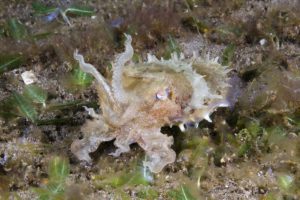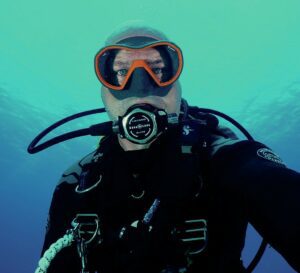Reports have been coming in that divers at Wakatobi are getting flashed – that is by flasher wrasses.
Search around the edges of a reef at Wakatobi and you might run across a harem of flasher wrasses. We say harem because the group will be made up of mature females and a single male patriarch. Throughout the day, these colorful little fish go calmly about the business of nibbling on small chunks of algae. To see why they are called “flashers,” you'll want to come back just before sunset. That's when the male turns romantic.

To signal his amorous attentions, he will flair his enlarged fins and transform his already bright coloration into electric-bright hues as he begins a courtship dance to catch the attention of a partner. Photographers who are fortunate enough to capture this display on film can add a prized image to their portfolio.
“Our cameras work overtime at Wakatobi and the many varied reef subjects on the Wakatobi reefs never disappoint, says guest Wayne Osborn. We were delighted to find flasher wrasse on two of our favorite sites, Dunia Baru and Teluk Maya.”
Dunia Baru is one of the many dive sites at Wakatobi, which has also been featured here on ScubaDiverMag.com
There are currently 20 recognized species of flasher wrasses belonging to the genus Parachellinus native to the Indo-Pacific. A smaller number when you consider this group of tropical marine fish belong to the family Labridae, which has over 600 species that can be broken down to some 81 genera.

Wrasses as a group are as diverse as they are large.
While most are this family are typically small (most of them less than 20 cm / 7.9 in long) and brightly colored a few grow to be quite large like the humphead wrasse, the largest of the group that have been documented up to 2.5 m / 8.2 ft in length. They are efficient carnivores, feeding on a wide range of small invertebrates.
Discover more about Wakatobi's marine life on their blog Wakatobi Flow.








